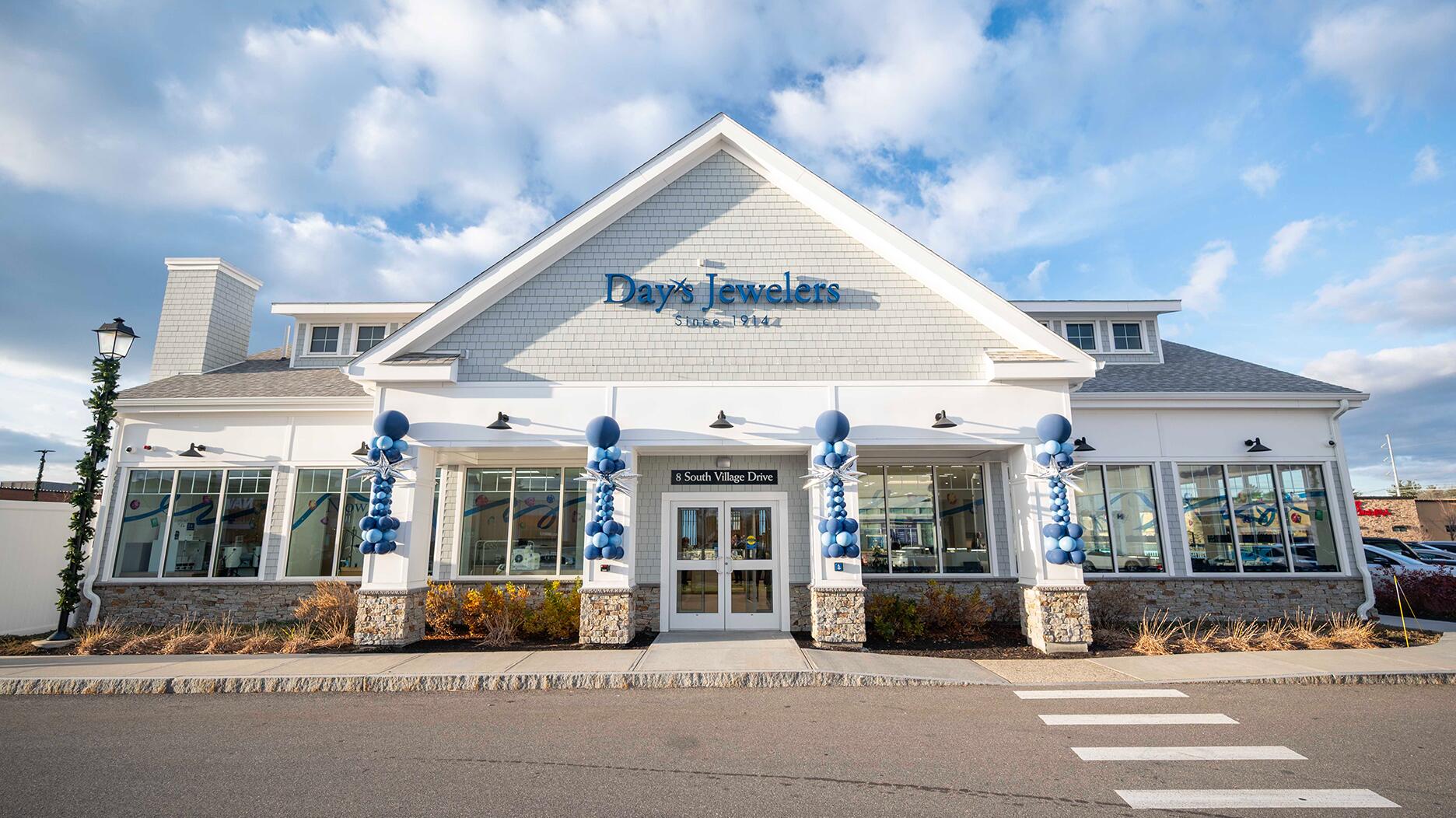The couple pleaded guilty to concealing at least $127 million in cash transactions at its precious metals businesses.
What Will Become of Retail Jewelry Stores?
Peter Smith doesn’t claim to have all the answers but knows where the conversation should start. This is part one of a two-part column.

In a study, 94 percent of respondents identified themselves as having an above-average sense of humor, wrote Rod Martin in The Psychology of Humor. It is a poignant reminder of the difficulty, perhaps even the impossibility, of being objective about one’s self or, for the purpose of this column, one’s business.
I was reminded of that earlier this year as I flew back from a few days in Arizona, where I met and spoke with large numbers of retailer and wholesaler friends at two different trade shows.
Amidst the usual small talk was an undercurrent of uncertainty--occasionally exciting, more often unnerving--about where our respective businesses and our industry is headed.
The very day that I started writing this column there was yet another announcement of a jeweler closing his doors (two doors to be exact) for good. When I arrived in this country in 1983, there were about 40,000 points of sale for retail jewelry. Today, depending on exactly what you count, I expect that number is closer to 16,000. We are clearly in the throes of a fundamental shift in retail and few should be surprised that jewelry stores are taking it squarely on the chin.
Before this year is out, there is every reason to believe that many more jewelry stores will be gone. Some of those stores will be multi-generational, others will have been founded by the current operators. Some will be branded and others still will have existed, until they no longer could, on the strength of their custom work and the promise of great service.
Despite the major contraction of retail jewelry stores, few seem to believe that they will be next to bow out having, in many instances, survived for generations. I can’t help but remember one North Carolina retailer who used to boast that his grandmother had steered his business through the Great Depression, only for the business to finally close on his watch. The lousy lighting, low-energy staff and his own continuous admonitions of doom-and-gloom long forgotten, as he unceremoniously and unknowingly crafted his own demise.
At the opposite end of the spectrum there exists a quiet, mostly unspoken delusion that somehow things will eventually get better. We’ll somehow manage to overcome the economic headwinds and the customers will surely come to their senses and realize that the web is just no substitute for the myriad of great things
Doug Stephens wrote a very compelling book last year, The Retail Revival. The book is a serious study of what retail might look like in the future and, quite honestly, it should be required reading for retailers and for any business that depends on retailers to make a living.
His basic premise is that retailers will have to make a very clear decision about what they want to be--either entirely and expertly price-driven, with all the attendant challenges of being the low-cost provider, or they must fully and completely embrace the high end of the landscape, with great quality, differentiated products delivered in a very focused way and a great customer experience.
Stephens argues that the space in the middle, where I believe the vast majority of retail jewelers reside, will, quite simply, go away. (On a trip to Ohio recently, I had one retailer tell me that his store’s mantra is to be “the best quality and the lowest price.” There isn’t enough head shaking to go around on that one, but he might be the poster child for that space in the middle.)
Whether Stephens is right in predicting that retailers will have to decide which end of the spectrum to operate, price or high-quality, is neither here nor there. Like him, there are a whole host of writers, academics, marketers and business people who will prophesize on future of retail and nothing but the future itself will reveal how right or wrong they were.
Fueled by my own endless curiosity on the topic, and by the many recent conversations about the future of retail jewelers, I felt compelled to write down some thoughts that you might find interesting as you consider your own business.
The list is not intended to be exhaustive; I will leave discussion of financials, real estate and the like to the many who are better informed than I on those matters.
And, I suspect, some of the topics may raise more questions than provide answers. They are, however, important discussion points, and if they provide some modicum of clarity on your strengths and/or weaknesses then I’ll consider the effort to have been worthwhile.
What do you want to be when you grow up (and why should I care?)
What is your vision for your business and how does that align with the realities of today’s retail landscape? If the best you can offer is “we provide quality and service,” than your vision is blurred. Not because quality and service don’t matter, because they do. In fact, I would argue that they have never been more important. However, you need a focused story (recognized brands and potentially your own branded story, which does not mean everything in the store that does not otherwise have a name) that will resonate with consumers.
If I were to sum up Stephens’s message in one sentence, I would say that if you are trying to be all things to all people, you are, or soon will be, in big trouble. Robin Lewis and Michael Dart write in The New Rules of Retail, “In the future, retailing will be about narrowing assortments and reducing vendors and wholesale brands to drive greater control, productivity and profitability.” The days of having everything are over.
If I am one of the 80 million millennials, why should I care about your business? Why would I want to work there or shop there? Why would I want to take selfies in your store, post pictures of me wearing your products on Instagram? Why would I want to WhatsApp my friends about how cool your store is? What makes your story relevant to me?
If you do not have a strategy to engage millennials as employees and customers your relevance is already on the wane and the trip down the hill will be fast and painful. According to the U.S. Chamber of Commerce, millennials wield $200 billion of direct purchasing power and $500 billion in indirect spending. By 2017, they will become the largest spending group, as they overtake the baby boomers.
Despite that sobering thought, I still meet retailers who tell me that millennials don’t spend, are still living with their parents, are knee-deep in college debt, etc. The oldest millennials are having children now and any business owner who believes he or she can thrive without engaging them is headed in the wrong direction.
Being a multi-generational business has a nice ring to it, but it has absolutely nothing to do with relevance. Our kids do not frequent Apple, Starbucks or Zara because they have been around for generations. I would even argue that they do not frequent Nordstrom or Tiffany & Co. because of their proud heritages. They frequent those stores because they have found a way to be relevant to them, not because they’ve been around for 115 and 180 years, respectively.
Being around a long time does not create entitlement to business or relevance. It didn’t help Woolworths or Montgomery Ward and it isn’t helping Sears. It also did not help many of the 750 retail jewelry stores that exited stage-left last year. If you can’t identify your reason for being beyond “we provide the best service” or “we’ve been in this community for 100 years” than you cannot reasonably expect your target customers to care enough to give you their business.
Kill your sacred cows
I am a huge fan of The Profit, with Marcus Lemonis, and I am a devotee of his simple mantra of people, product and process. If you’ve never seen it, I would strongly recommend that you binge-watch it on CNBC.
His genius, as with others of his ilk, is in his remarkable capacity for simplification. He identifies the challenges and opportunities and quickly sheds those elements (products, processes and people) that provide little value in the overall scheme of things. He wants the businesses that he invests in to be great at something and to clearly communicate that something through all aspects of their operation: people, products, processes, marketing, etc.
Have you been carrying less-than-effective people? Do they align with your vision and strategy? If your people can’t move the bar, they should be invited to engage in another line of work as soon as possible. For more on this, I unapologetically refer you to read my book, Hiring Squirrels, available on Amazon. It’s an easy read. Other great books on this topic include First, Break All The Rules (Marcus Buckingham) and Good To Great (Jim Collins).
Your people have to be great, and there is no excuse for not building a great team. It can be done and it should be done, but you just might have to change the way you have been doing it up to now.
I have long believed that those retailers who survive in our industry will be smaller and more nimble. They will not be buried under 5,000 feet of mostly irrelevant stuff, but they will have an energized and focused product offering that is clearly and consistently communicated to their current and prospective customers. It will more reflect a high-end duty-free shop in a great international airport than the standard jewelry store model. It will have a limited number of brands and stories and each will be deep and narrow in scope. The more stuff you show, the less people will see.
Again I would refer to Tiffany. We tend to think of them as having been born with their blue box and the birthright to the all things great in our industry. The reality is, of course, that Tiffany has grown from just a handful of stores in the ‘80s to almost 300 stores today. They didn’t get there by replicating what was then the Fifth and 57th flagship store in New York; they reinvented themselves with leaner, more focused stories that reflected the best of what they were doing (Elsa Peretti, Paloma Picasso, etc.) and by eschewing the areas of their business that were not as relevant, like tabletop and giftware. All the while, they focused on story-telling and great merchandising, two powerful elements that every retail store ought to embrace.
Ask yourself what finite number of stories (brands, including your own) you want to tell and stock narrow and deep (why would you ever be out of stock on a bestseller and yet I see it every single day?).
The second part of that story, unless you are just opening a new store, is to be merciless in eliminating products that do not align with your vision. They are a distraction for all the wrong reasons and despite your best intentions when you bought or made them, they are probably not going to be any more interesting a year from now or two years from now than they are today.
The last part of this section is to kill all processes that are dated, unnecessary or unrelated to driving your business closer to your aspiration.
If I had a dollar for every time a retailer said “well, we’ve always done it that way” I would have at least $700.
Amazingly, there are beautiful stores out there that still write the tickets by hand. There are stores that require multiple touches to process a transaction. There are stores that have great salespeople working on vendor calls, repairs, watch straps, etc. Why? If they are great, keep them where they can do their best work and hire behind them so that you can take all non-sales-related activities away from them.
Kill any and all processes that do not make sense and streamline everything to maximize time, efficiency and the entire experience for both the customer and the store.
Get the customer out of your store
I read an article recently by a “retail expert” that offered insights into how you can keep your customers in your store for longer periods. He’s missing the boat. He’s living on another planet. You should be committed to fulfilling your customer’s needs in the shortest amount of time possible and allowing them to get on with their day and their lives.
When I want to hang around Nordstrom or Apple, I will do so if it suits my schedule. I will occasionally browse the stores and sometimes even kill time if I am waiting for my wife or one of the kids, but otherwise I want the retailer to respect my time and to get me in and out as quickly as possible.
If you want to give your customers an experience that is really about them, invite them into your store after hours. Hire a great musical act and provide a thank-you night, with cocktails and appetizers. Make it about your customer, not about filling out wish lists or trying to sell them. The sales will be there if that customer is emotionally engaged and the Gallup organization would tell us that those customers will deliver a 27 percent premium over customers who are not as engaged.
You might also think about inviting interesting authors to do readings and sign books, or artists to feature their work.
Perhaps you could invite nutritionists or other speakers of interest. Again, think about making your business less directly about you and more about your customer.
Howard Schultz talks about Starbucks being that “third place,” after home and work, and there’s no reason to believe that we cannot reshape retail jewelry stores into places that become more accessible and more relevant to your customers (and prospects) because they associate it with great experiences.
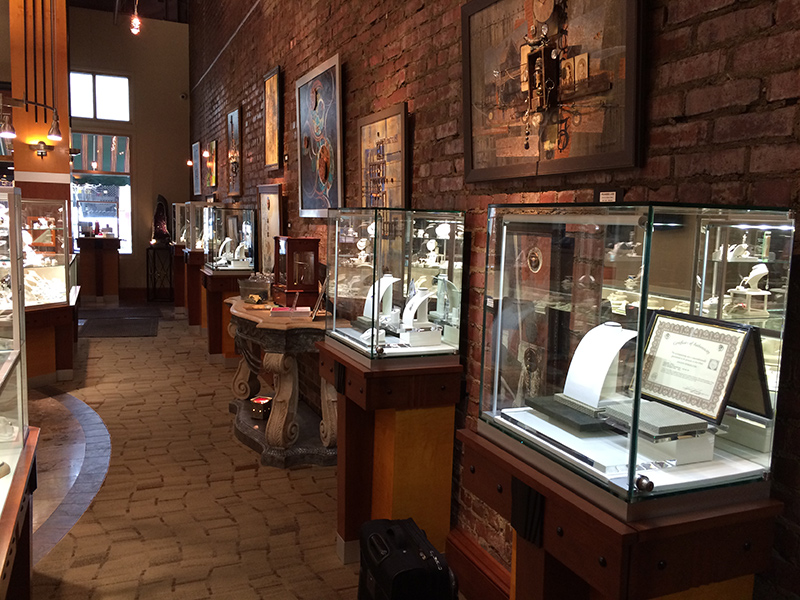
Great retail spaces do not happen by accident. Whether it’s Apple, Nordstrom, Restoration Hardware or Zara, there is a huge amount of effort that goes into creating a special retail environment. There are numerous ways to infuse retail spaces with character, personality and energy; from the choice of colors on the walls, to the flooring selected, to the music choices, to your decision about whether to introduce a particular scent into your environment, to your use of technology, imagery and or video, to the lighting you use.
The aforementioned companies make very careful choices about how to execute their respective spaces and they are diligent in applying those choices in an effort to make their stores as engaging and experiential as possible. There is no absolute right way to create a magical environment but the one you establish should be deliberate and specific to you.
Last week I went into a retail store in the Midwest, and I was about as angry as one could be after the visit. From the moment I entered the store I was struck by how absolutely awful the environment was. Despite having some well-known brands, the energy of the team was non-existent, the lighting was atrocious, the cases were overstuffed and packed with irrelevant products and the glass seemed to be collecting fingerprints like there was a prize for it.
Later that day, I visited a small store in Ohio called Julz by Alan and the first thing I said to the owner was “faith restored.” His store was a testament to the very best of what retail jewelers can offer for all sorts of reasons.
We were warmly greeted by his salesperson Jodie when we entered and everything about the store and the experience was expertly crafted. The music was at just the right levels, so as to be enjoyed without drowning out conversation, the store had a beautiful combination of exposed brick and deco and industrial lighting. The cases were beautifully lit, with carefully orchestrated displays (lots of negative space and slate tiles inserted between the display fixtures to bring the exposed brick into play) and every detail seemed to have been considered, down to the store’s logo on the water bottles and, to top it off, a wonderfully cute personalization (with the store brand) of the coffee that they served.
In Impulse: Why We Do What We Do Without Knowing It, David Lewis writes about the powerful effect of music and aromas in your store.
While one can debate what music is best and what the preferred aroma should be (I know lots of people who love the smell of freshly baked cookies), a combination of the two, coupled with the right lighting, a well-considered aesthetic and great and friendly people, goes a long way.
Stay tuned for part two next Tuesday, which will include three more areas for business evaluation, plus a list of recommended reads for retailers.
Peter Smith, author of Hiring Squirrels: 12 Essential Interview Questions to Uncover Great Retail Sales Talent, has spent more than 30 years building sales teams at retail and at wholesale. He is president of Vibhor Gems and he has previously worked with companies such as Tiffany & Co., Montblanc and Hearts On Fire. Email him at peter-at-vibhorgems.com, dublinsmith-at-yahoo.com or reach him on LinkedIn.
The Latest

Consumers shared concerns about prices, inflation, tariffs, trade, and politics in the survey’s write-in response section.

In February 2026, the auction house will move its headquarters to the former Steinway Hall, a neoclassical landmark on Billionaires’ Row.

How Jewelers of America’s 20 Under 40 are leading to ensure a brighter future for the jewelry industry.

The new show will take place Jan. 23-25, 2026.


The former BHP Billiton leader and Gemfields chairman is remembered for his influential leadership throughout his 50-year mining career.

The LVMH-owned brand has partnered with the costume design union to revamp its award for 2026.

Roseco’s 704-page catalog showcases new lab-grown diamonds, findings, tools & more—available in print or interactive digital editions.
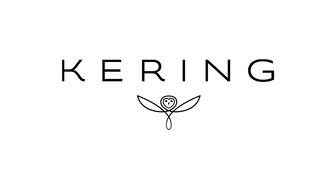
The luxury titan inked a deal to acquire an initial minority stake in the jewelry manufacturer with a pathway to full ownership by 2032.
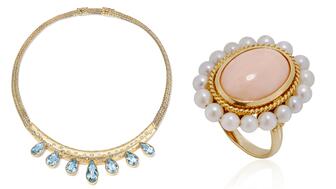
The company’s curation of unsigned vintage and estate jewelry debuted at the Bloomingdale’s in Costa Mesa, California.
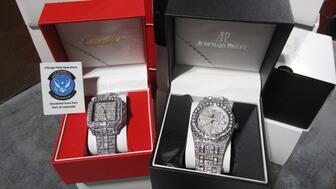
In the recent multi-shipment seizure, CBP also found counterfeit Audemars Piguet, Moncler, and Chrome Hearts items.

Helzberg’s Chief Retail Officer Mitch Maggart shared details about its tests of a new store concept rooted in an elevated luxury experience.

Jewelers of America execs and National Jeweler editors discuss tariffs, the sky-high gold price, and the engagement that broke the internet.
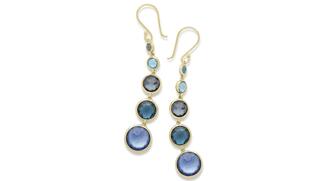
The luxury goods company said founder Ippolita Rostagno will remain at the brand’s helm.

Laura Burdese, who joined the Italian luxury brand in 2022, will take on the role in July.
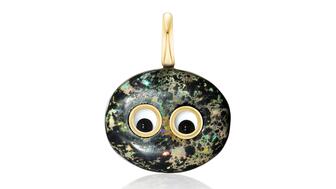
The National Jeweler editors revisit the most noteworthy industry happenings and design trends from 2025.
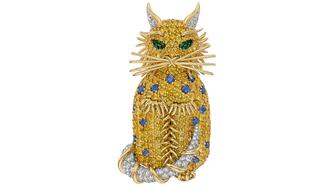
Need a gift for the cat lover who has everything? Look no further than our latest Piece of the Week.
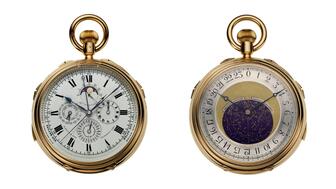
It purchased the “Grosse Pièce,” an ultra-complicated Audemars Piguet pocket watch from the ‘20s, for a record-breaking price at Sotheby’s.

The lab-grown diamond grower now offers custom engagement and fashion jewelry through its Kira Custom Lab Jewelry service.

Chandler got his start at Michelson Jewelers and has served as DCA president and CEO since 2001. He will retire at the end of the month.

The boutique is slated to open this week inside Terminal 8, offering pre-owned Rolex watches and more to international travelers.

Sponsored by Digital Monitoring Products
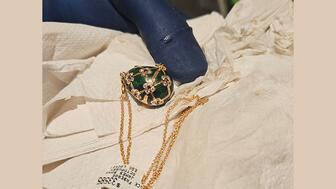
The special-edition egg pendant ingested in a New Zealand jewelry store was recovered after a six-day wait.
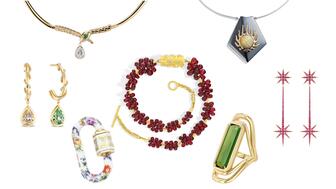
Associate Editor Natalie Francisco plays favorites with Piece of the Week, selecting a standout piece of jewelry from each month of 2025.

The “Love and Desire” campaign is inspired by the magic that follows when one’s heart leads the way, said the brand.

Two awardees will receive free tuition for an educational course at the Swiss lab, with flights and lodging included.

Berta de Pablos-Barbier will replace Alexander Lacik at the start of January, two months earlier than expected.














